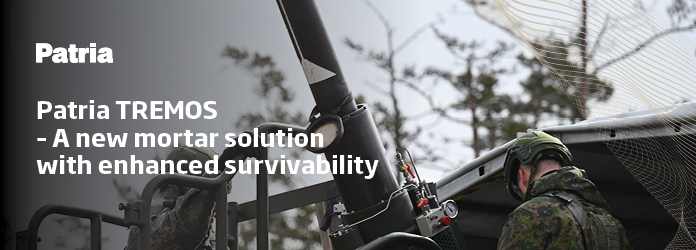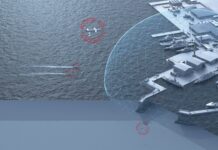
MARSS, Wavefront and Forcys combine to present multi-domain harbour security demo
Peter Felstead
UK companies MARSS, Wavefront and Forcys came together from 10 to 13 June 2025 to offer live demonstrations of multi-domain security technology at Portland Port in Dorset.
During the demonstrations, the MARSS NiDAR artificial intelligence (AI)-enhanced security and surveillance command-and-control (C2) platform was integrated with Wavefront’s Sentinel Intruder Detection Sonar (IDS) and two other sensors – an Echodyne Echoshield Ku-band air search radar and a Teledyne FLIR M364C LR multispectral marine camera – to represent what was described as a “mid- to low-end” harbour security installation.
Forcys, meanwhile, acts as the defence-facing portal, or one-stop shop, for the companies within the Covelya Group, which includes Wavefront.
The demonstrations saw divers deployed from a RHIB into Portland Harbour and a quadcopter unmanned aerial vehicle (UAV) flown into the location to represent real-world security threats. The NiDAR-controlled security suite duly identified, classified and issued alerts for the threats – along with other activities not under the companies’ control, including the arrival of a passenger craft and the presence of Royal Navy divers in the harbour conducting a training serial.
The Sentinel IDS, which has been continually developed over the last 20 years and first went to market in 2008, automatically detects, classifies and tracks subsea threats. While the system was originally developed to detect swimmers, the system’s underwater threat spectrum has now widened to include platforms such as mini-subs and swimmer deliver vehicles (SDVs) as well as blisters emplaced on the side of unsuspecting ships as a drug-smuggling conduit.
The sonar, an example of which was temporarily deployed in Portland harbour for the demonstrations, can also be fixed in a permanent location or deployed from a naval vessel, either by a cable or boom or via a through-hull mechanism. Wavefront has also developed a mobile version of the system that can be transported to the area of operation in a specially designed trailer.
The latest-generation Sentinel 2 IDS features an advanced Simultaneous In-band Active and Passive Sonar (SInAPS) capability and can identify targets at ranges of up to 1,500 m for mini-subs or SDVs and up to 1,000 m for divers.
Simon Goldsworthy, Wavefront’s global business development manager for intruder detection systems, explained that within the frequency range in which the Sentinel IDS listens passively – 60-80 kHz – “about 99.9% of noise is probably man made”.
Goldsworthy additionally noted that the Sentinel IDS is the world’s most deployed underwater intruder detection system and is currently used at around 250 locations around the globe.
MARSS’s NiDAR, meanwhile, is an AI-enhanced fully modular and sensor-agnostic multi-domain defence, security and surveillance C2 platform designed to reduce the operator burden in a network involving multiple sensors and/or effectors. Fully scalable, NiDAR can be run from a control room, a truck or a tablet and is designed to present its operators with rich information, ensuring they are only alerted to critical events.
The MARSS overarching NiDAR Core platform uses a combination of methods from many artificial intelligence disciplines to analyse object pattern behaviour, fusing multiple sensors and countermeasures capabilities to provide a single tactical picture. The system, for example, automatically filters out track duplications caused by multiple sensors picking up the same target by prioritising the track data is most reliable in a given situation. The platform can also track patterns of behaviour over time to pick up any anomalies.
Mick Collier, the business development manager for MARSS operations in the UK, Europe and the Middle East, noted that NiDAR is currently used in more than 60 installations around the world, protecting a total area of around 12,000 km2.









